Parents and Teachers Working Together
Parents and Teachers Working Together
Addressing Schools Most Vital Stakeholders
Brett J. Novick
ROWMAN & LITTLEFIELD
Lanham Boulder New York London
Published by Rowman & Littlefield
A wholly owned subsidiary of The Rowman & Littlefield Publishing Group, Inc.
4501 Forbes Boulevard, Suite 200, Lanham, Maryland 20706
www.rowman.com
Unit A, Whitacre Mews, 26-34 Stannary Street, London SE11 4AB
Copyright 2017 by Brett J. Novick
All rights reserved . No part of this book may be reproduced in any form or by any electronic or mechanical means, including information storage and retrieval systems, without written permission from the publisher, except by a reviewer who may quote passages in a review.
British Library Cataloguing in Publication Information Available
Library of Congress Cataloging-in-Publication Data
Names: Novick, Brett J.
Title: Parents and teachers working together addressing schools most vital stakeholders / Brett J. Novick.
Description: Lanham, Maryland : Rowman & Littlefield, 2016. | Includes bibliographical references and index.
Identifiers: LCCN 2016042610 (print) | LCCN 2016043101 (ebook) | ISBN 9781475828870 (cloth : alk. paper) | ISBN 9781475828887 (pbk. : alk. paper) | ISBN 9781475828894 (Electronic)
Subjects: LCSH: Parent-teacher relationships. | Conflict management.
Classification: LCC LC226 .N68 2016 (print) | LCC LC226 (ebook) | DDC 371.19/2dc23
LC record available at https://lccn.loc.gov/2016042610
 The paper used in this publication meets the minimum requirements of American National Standard for Information SciencesPermanence of Paper for Printed Library Materials, ANSI/NISO Z39.48-1992.
The paper used in this publication meets the minimum requirements of American National Standard for Information SciencesPermanence of Paper for Printed Library Materials, ANSI/NISO Z39.48-1992.
Printed in the United States of America
I would like to dedicate this book to my late father Dr. William Novick, who taught me how to be a father. To my parents who taught me the importance of hard work and values. My wife Darla, who teaches me each and every day how to be a better person, parent, and spouse. My children Billy, and Samantha, who give me hope for a future generation with pride. Also, to the many students, parents, and educators that I have had the honor of working with over the years, who have taught me so very much. Please know it was an honor for me to be allowed to play a small part in your lives. The many mentors who, in both education and life, inspired me in every aspect. Finally, a heartfelt thank you to the publishers and staff at Rowman & Littlefield for your confidence in publishing this book and to you, the reader, for taking precious time out of your schedule to read my book. Thank you.
Contents
We expect teachers to handle teenage pregnancy, substance abuse, and the failings of the family. Then we expect them to educate our children.
John Sculley
The above comment, made by John Sculley while CEO of Apple Computer, Inc., has been widely quoted by education advocates and professionals for over 20 years. And, it has never been more true to life than it is today. Children and teenagers get conflicted messages from peers, media, and family, and while family values may still be a popular phrase, the meaning thereof is becoming increasingly blurred. Children and teens are still generally told by their parents and teachers to avoid bad influences (drugs, sex, etc.), but these messages are becoming drowned in the sea of social media, which is often filled with provocative images, bullying, and a general sense of self-centeredness.
Developmentally, as children become teens, they gradually shift focus toward fitting in with peers, and grow more susceptible to peer influence. This influence seems to now come from all overnot just from Facebook and Instagram pages, but also from tweets, YouTube videos, and messages exchanged through a plethora of texting apps teens use nowadays to hide their communications from their parents. The shift away from family and toward peers appears to occur earlier and earlier. It is not unusual for parents to report that their 10-year-olds now are much more influenced by their peers, and are exposed to much more mature content than their 18-year-olds were when they were this age just 8 years ago. In sum, parents feel they are increasingly losing control over the influences that shape their children. This loss of control is accompanied by frustration, anger, and often desperation to arrest or reverse some of these factors.
Indeed, parents have legitimate reasons to worry. Nearly half of high school students become sexually active, and 41% dont use condoms (CDC, 2013). About half of all sexually transmitted diseases occur in teenagers and college-age adults, and in 2013, 10,000 cases of AIDS were diagnosed in individuals under age of 25 (CDC).
While rates of teenage pregnancy in the United States are dropping, the US teen birth rate is still much higher than many other developed countries, including Canada (US Department of Health & Human Services, 2014). The same report acknowledges that birth rates among teens are more than twice as likely among Latino teens (38 per 1000) and African American teens (34.9 per 1000) than their Caucasian counterparts (17 per 1000). About 89% of these births occur outside of marriage, and about 77% of these pregnancies are unplanned. Clearly, a significant portion of teenagers become sexually active at a young age, and they tend to do so with limited responsibility, facts that trouble many parents and undoubtedly cause them many sleepless nights.
Even more alarming is the exposure of teenagers to alcohol and drugs of abuse. In 2014, 9% of 8th graders, 23.5% of 10th graders, and 37.4% of 12th graders admitted to past-month use of alcohol, and nearly 20% admitted to binge drinking in the previous 2 weeks (National Institute on Drug Abuse, 2014).
Marijuana use was reported by 12% of 8th graders and over one-third of high school seniors. Over 80% of high school students and over one-third of middle school students reported that marijuana is easy to obtain. About 44% of school students knew a student selling drugs at their high school, and 75% of 12- to-17-year-olds reported that seeing pictures of peers partying (with alcohol or drugs) on social media encouraged them to do the same (National Center on Addiction and Substance Abuse, 2012).
While heroin use among teens has leveled off, such use is now common in suburban neighborhoods, and 29.7% of 12th graders and 12.6% of 8th graders say that they can obtain heroin (CDC, 2014). The death rate due to drug overdose among teenagers and young adults has doubled in the past decade, reaching 7.3 per 100,000 in 20112013 (Trust for Americas Health, 2015). Thus, parents have a solid basis for their worries.
With so many negative influences all around, parents look for sources of positive influence in their childrens lives. Naturally, schools come to mind, as children gradually start to spend more time in school than they spend awake at home. Indeed, education is a powerful force that can change peoples lives. Those with high school education live longer, healthier, and earn more money than those who drop out, and, generally speaking, the higher the education the higher the standard of living. So, parents hope that good education will improve their childrens prospects for the future.
Schools also provide other positive influences. Classes in art, music, science, etc. expose students to directions in life that may spark their curiosity, pique their interest, and spur growth and further educational pursuits. Involvement in sports provides opportunities to challenge themselves and each other both physically and mentally, and builds healthy relationships. Clubs and special interest groups help students bind with like-minded teens and grow cognitively and socially.
Next page
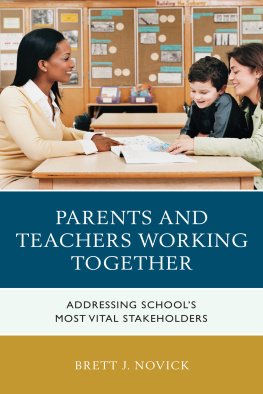



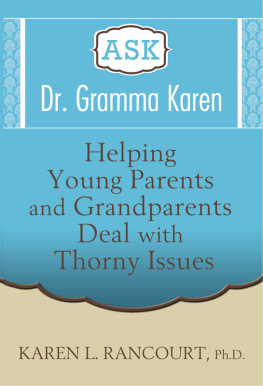
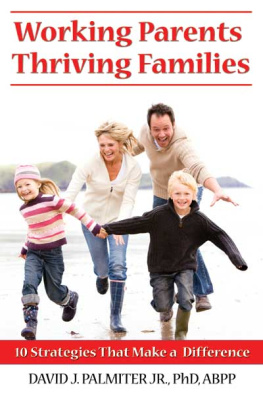
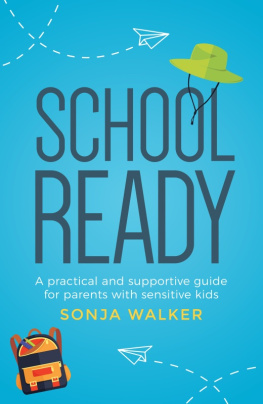
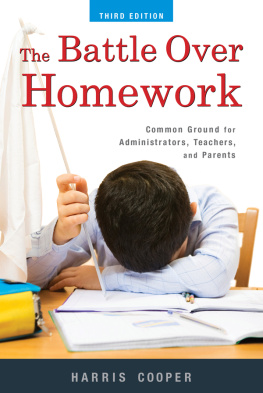
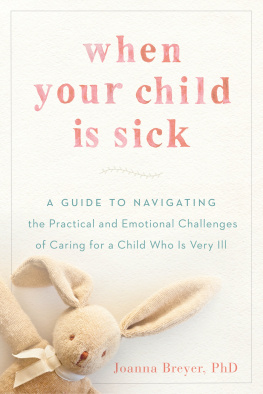
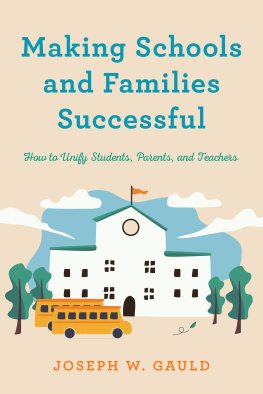
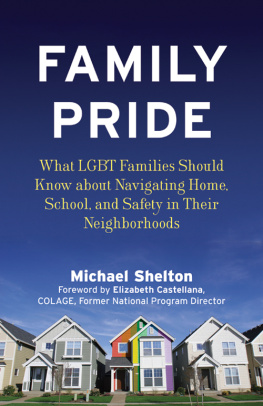

 The paper used in this publication meets the minimum requirements of American National Standard for Information SciencesPermanence of Paper for Printed Library Materials, ANSI/NISO Z39.48-1992.
The paper used in this publication meets the minimum requirements of American National Standard for Information SciencesPermanence of Paper for Printed Library Materials, ANSI/NISO Z39.48-1992.